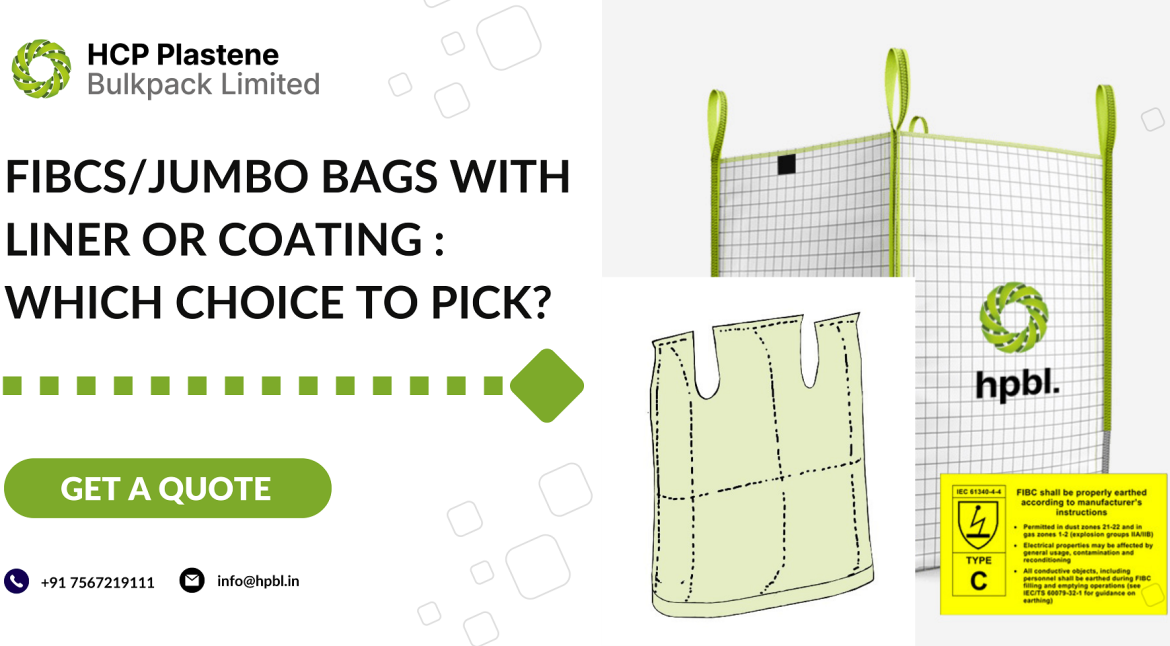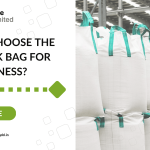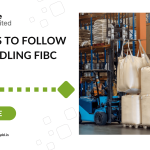For many years now, FIBCs and Jumbo bags have met the bulk packaging requirements of numerous sectors. Different sectors have different and complex requirements at times and every jumbo bag manufacturer in Gujarat ensures that they cater to each and every requirement of every sector. There are times when we must choose between liner-based and coating-based FIBCs, and the decision will mostly rely on the sort of demand the customer has. The following tips will encourage you to choose the coated or liner-based FIBC bag for your company.
Comparison between FIBCs/Jumbo Bags with Liner and Coating
Many businesses in the food, mining, chemicals, pharmaceutical, and other industries choose Jumbo Bags for the most efficient transportation and packaging solutions. Finding a FIBC bag that perfectly meets your company’s demands is a difficult task because there are so many different types, sizes, forms, and uses for these bags. The choice between a coated FIBC bag and one with a liner is one of the final two interesting factors when choosing the best type of jumbo bag for your company.
FIBCs with liners
You might need to choose a giant bag with liners if your item requires extra protection and is made of a powdery substance. Jumbo bags manufacturers in India make These FIBCs of woven polypropylene, and they come with liners that may be linked together or used separately and fit freely within the bags. Jumbo bags include liners to protect the contents from contamination, air, and moisture. The poly liners work marvellously to store moisture or oil or to keep moisture out and serve as an efficient dampness/moisture barrier to protect powdered goods.
FIBC sacks may be used in a variety of ways, and many companies prefer to recycle these durable bags to extend their useful life and save costs. FIBC bags are designed for repeated use and have a safety factor of 6:1. In these situations, the liner may be removed after using the pack and changed out for a new lining to reuse the bag. A fork or other sharp object shouldn’t be used to damage or puncture the external bag because this might result in the bag failing suddenly.
Some FIBCs come with liners that are attached to the outer bag. The usual techniques involve attaching the liner with adhesive and joining it with tabs or vertical spines. Despite the fact that they can’t be reused, the multiple uses that these bags offer make them a popular choice for many companies.
FIBCs/Jumbo Bags with coating
The type of items will determine whether or not you actually need a coated FIBC. The coating protects the item from dust and moisture. Choose coated FIBCs if your product demands a high level of sifting sealing in the strange occasion that it does. However, coated FIBCs come with a light polypropylene lamination that is applied to the fabric of the bag, either on the outside or inside. Coated FIBCs are essentially similar to regular FIBC bags. This offers additional protection and prevents air, moisture, and a few tiny particles from passing through the polypropylene fabric’s weave.
The most often used coated FIBC jumbo bag is used to hold fine powders including wheat, cement, mineral, and chemical powder. The reason is because, unlike other bulk bags, they do not leak through the woven gaps.
Bulk commodities are typically transported and stored in coated giant bags, or FIBCs. The product is constructed of polypropylene resins, which are soft yet highly sturdy. This premium material may be used in numerous sectors to carry powders, grains, and other materials.










